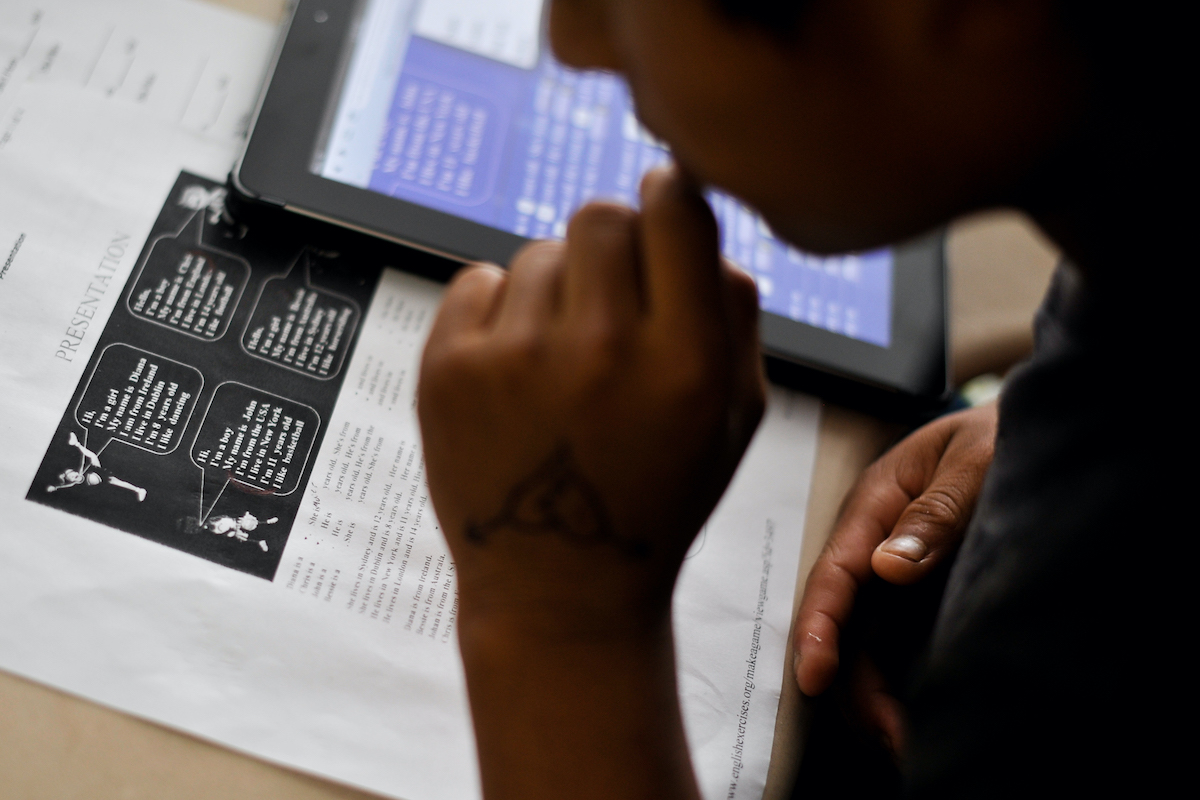

AP Photo/Emily Varisco
Caring about the future of education in the United States means investing in the progress and success of Latino students, argues a new report by UnidosUS.
The report, titled “Latino Student Success: Advancing U.S. Educational Progress for All“ and released by the group at its annual conference in San Antonio on Monday, makes seven recommendations that policymakers should follow in order to guarantee that decades of steady educational progress made by Latinos are not erased by the setbacks brought about by two years of the COVID-19 pandemic.
“When we invest in Latino students, we are investing in a stronger education system for all students, and for our nation—and the time to start is now,” Unidos president and CEO Janet Murguía writes in the foreword.
For UnidosUS, the nation’s largest Latino advocacy organization, the main goal is to ensure that funding is targeted to support those students and schools with the highest needs —especially those that have struggled the most during the pandemic— to give them an opportunity for academic recovery.
Latino students are the largest ethnic group in the United States. In 2020, more than one in four U.S. public-school students were Latino. Yet, despite of the great representation and the diverse set of talents and experiences that they bring to the classroom, Latinos often face challenges in greater proportion than other communities.
According to the report, some of the main challenges Latino students face are linked to the lack of funding for the schools they are most likely to attend and the homework gap caused by a lack of access the internet and other tools needed for a strong academic performance.
Amalia Chamorro, director of education policy at UnidosUS, told Latino Rebels that most of the issues, such as the inequitable access to the internet, existed before the pandemic but became more noticeable once everything went virtual.
The report also shows that the rates of graduation and college enrollment among Latino students have decreased and that there is a lot of work to be done to ensure that schools provide a welcoming environment for Latino students—where their parents can engage, being bilingual and bicultural is treated as a strength, and they can see themselves represented in the faculty.
“We have 28 percent of the student population in K-12 who are Latino, but yet we only have nine percent of the teacher population who identify as Latinos,” Chamorro explained. “There’s already a mismatch there.”
Chamorro stresses the importance of investing in recruiting a diverse teacher workforce that knows the Latino community and shares common experiences with it.
“Research shows students do better when they see themselves reflected in their teachers and mentors,” said Chamorro, who also argues for better training for teachers of English learners.
“Given the statistics, just about every teacher is going to experience having an English learner in their classroom at some point in their careers,” she said.
To improve on these issues, UnidosUS proposes a set of seven steps that should guide the new education policies at all levels of government:
- Prioritizing actionable data on student learning to identify and support low-performing schools.
- Provide equitable funding to support low-income students.
- Build on the assets of multilingual learners by supporting their language and academic development.
- Ensure access to inclusive, responsive, and welcoming schools.
- Support “anywhere, anytime” learning to close the homework gap.
- Authentically engage with families
- Keep students on track for postsecondary education.
As the report states, Latino students are more likely to attend high-poverty schools that remained in remote learning longer. These institutions also experienced the largest declines in achievement growth, with researchers estimating a loss of around half a year of progress in math and reading during the 2020-21 school year.
The inequitable access to internet connectivity is likely to affect one in three Latino students. Data collected in 2018 showed that 31 percent of Latino households lacked high-speed broadband, and 17 percent did not have a computer.
Affected students have more difficulties in their learning, like having to do homework on a cell phone or find public Wi-Fi hotspots to attend class or do their homework.
The report argues that, if enacted, its proposed actions would create the conditions for continued progress by Latinos, which would, in turn, boost the achievement levels of the general student population.
“The Latino student population is going to represent about a third of students in just a few years. So if you’re investing in Latino students, you are really investing in the education system and in the general school population,” Chamorro said.
***
Juan de Dios Sánchez Jurado is a summer correspondent for Futuro Media. A writer, lawyer, and journalist from Colombia, he is currently studying at the Craig Newmark Graduate School of Journalism at the City University of New York.


